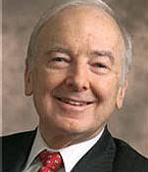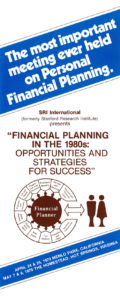Preface
A Suggestion That Changed the Course of a Professional Career
In the spring of 1978, I was in Los Angeles with my then-boss John Hobbs, President of Jennison Associates, to present the previous year's portfolio management results to our client, a major Fortune 500 company's Pension Fund Committee, and had also visited another LA-based company's Chief Financial Officer hoping to garner an invitation to make a pitch to his Pension Investment Committee. We had spent nearly ten years making such appearances before supposedly financially savvy corporate types and committees, and during the past few years mounting a very successful new business acquisition campaign building a large multi-national client base. For me, the experience of these encounters was beginning to lose its allure. I could also sense that John, an MIT-trained physicist and probably the most brilliant practitioner in the investment management profession I have come across, was himself beginning to tire a bit of these client encounters.

John Hobbs, President of Jennison Associates, whose thoughts on the future of Personal Financial Planning led to the formation of TFC.
In his usual concise manner, over a late afternoon drink, John was recounting the events of the day and wondering aloud about the unsophisticated nature of the exchanges and questioning during our two meetings. He tended to converse in a continual, chain-linked sequence of questions in the repartee seeking rapid-fire responses from his counterpart. His queries would often originate from outside the box, sometimes so off-beat that one became a bit breathless trying to keep up with their machine gun-like delivery. But always, either in real-time or later and with further contemplation, one got to the essence of what he was thinking and trying to elicit in the mind of his respondent. He then tossed off a suggestion which changed the course of my professional career.
The Institutional Market for Professional Money Management Services Had Become Saturated
In this instance John was ruminating on how saturated the institutional market for professional money management services had become. In the early 1970s, the corporate and public pension portfolio management market was a wide-open frontier. However, by the end of the decade, that seemingly boundless open space had become crowded with fully competitive offerings by all forms of investment advisors, broker-dealers, and banking money managers throughout the country. In contrast, by John's account the market targeting the high net worth (HNW) taxable individual investor had been considered too diverse for scalable institutional money manager attention. To him, that spelled opportunity — if one had the patience to package and implement an information technology-based comprehensive approach.
Targeting the High Net Worth Taxable Investor
As we flew back to Boston the next day, John (who the NY Times characterized as "a pioneer in the investment management industry"1) elaborated on what he thought would be an appropriate business model to enter the HNW market. He was aware that both Citi Bank and Merrill Lynch had devoted serious market research to this under-served space, but he suggested that a dramatically different business model would be required for long term success. That new business model would become known as comprehensive personal financial planning, packaged in the Registered Investment Advisor (RIA) setting; an approach today defined as "Wealth Management" — a rather pretentious term currently adopted by a number of aspiring entrants and players in the business.
A New Business Model Based on Comprehensive Personal Financial Planning
So, in 1978 I began an exploration of how the HNW marketplace for personal financial services was arrayed, how it was being covered, and what would be required to create a sustainable service where useful assistance would attract and retain a clientele of affluent individual investors.

Serendipitously, in 1979 Stanford Research Institute (SRI) announced a conference on Financial Planning in the 1980s which was aimed at coaching attendees on how to become an individual's trusted personal financial advisor. I returned from the conference in Menlo Park with a binder full of market research, but much of it was focused on how the "with-implementation-fee" business model (code for commission-based selling) was expected to be the optimal template for the purveyor of HNW personal advisory services. Becoming a client's "trusted financial advisor" in the SRI context meant maneuvering the individual into a mode in which all manner of "suitable-at-the-time" investment products could be flogged by the advisor-seller with only secondary regard for the customer's long-term best interest. Said another way, in the SRI model the customer's (and the use of that term instead of client was and remains significant) primary interest was only incidental to the advisor/product vendor's.
Rejecting the SRI "Implementation Fee" Model
The pure fee-only approach in which the advisor serves in a fiduciary capacity, and the client's interests are paramount, was thought to have little market appeal or profit potential. Further, since at the time personal financial advisory services were promoted as "freely offered" by stock brokers and insurance agents, it was believed that clients would not pay a fee for this new concept of financial counseling. Beyond this, according to surveys of the HNW market, the average participant was not sophisticated enough to understand the difference between a fiduciary's obligation to its client and a broker's "suitability" commitment to his or her customer.
Creative Dissonance in HNW Financial Services Market
A revolution in the financial services market was underway. Clearly, if the fee-only fiduciary approach was to make headway in the early 1980s, the offerer would need to invest a significant amount of missionary and educational effort. Such creative dissonance often breeds new and useful market reactions and opportunities for both purveyor and consumer, and in this case, the entrepreneur's urge for the writer prevailed.
____________
1 J. Hobbs Obituary from NY Times (January 15, 2010)
Sign The Guestbook
The author welcomes your feedback. Please sign the Guestbook to let us know of your visit to this website. There is a place to offer your suggestions, comments and/or questions.
